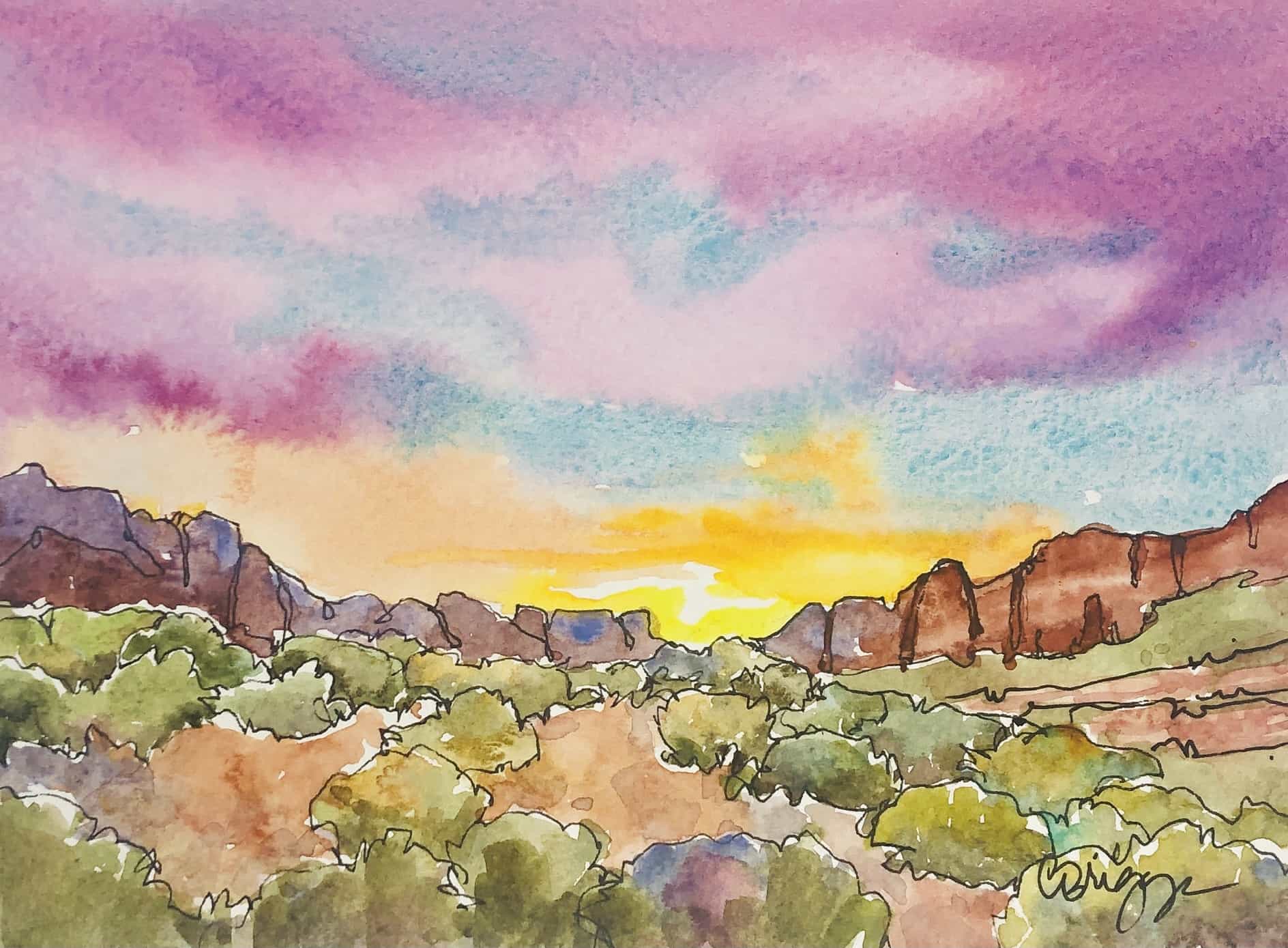Watercolor painting, with its fluidity and unpredictability, offers a mesmerizing medium for capturing the ethereal beauty of skies. From fiery sunsets to serene twilights, the sky’s ever-changing canvas inspires artists of all skill levels. This beginner’s guide delves into essential techniques, color theory, and practical tips, empowering you to transform blank paper into breathtaking skyscapes.
Understanding the Basics: Materials & Color Theory
The Artist’s Toolkit To embark on your watercolor sky journey, gather quality materials: watercolor paints, brushes of various sizes, a palette, water containers, paper towels or a sponge, and most importantly, watercolor paper. Choose cold-pressed paper for its versatile texture that supports both detailed work and washes.
Coloring the Skies Mastering color theory is paramount. The primary colors for watercolors are red, blue, and yellow. Mix these to create secondary colors (green, orange, and purple), which form the backbone of sky hues. Remember, warm colors (reds, oranges) suggest sunrise or sunset, while cool tones (blues, purples) evoke dawn or twilight.
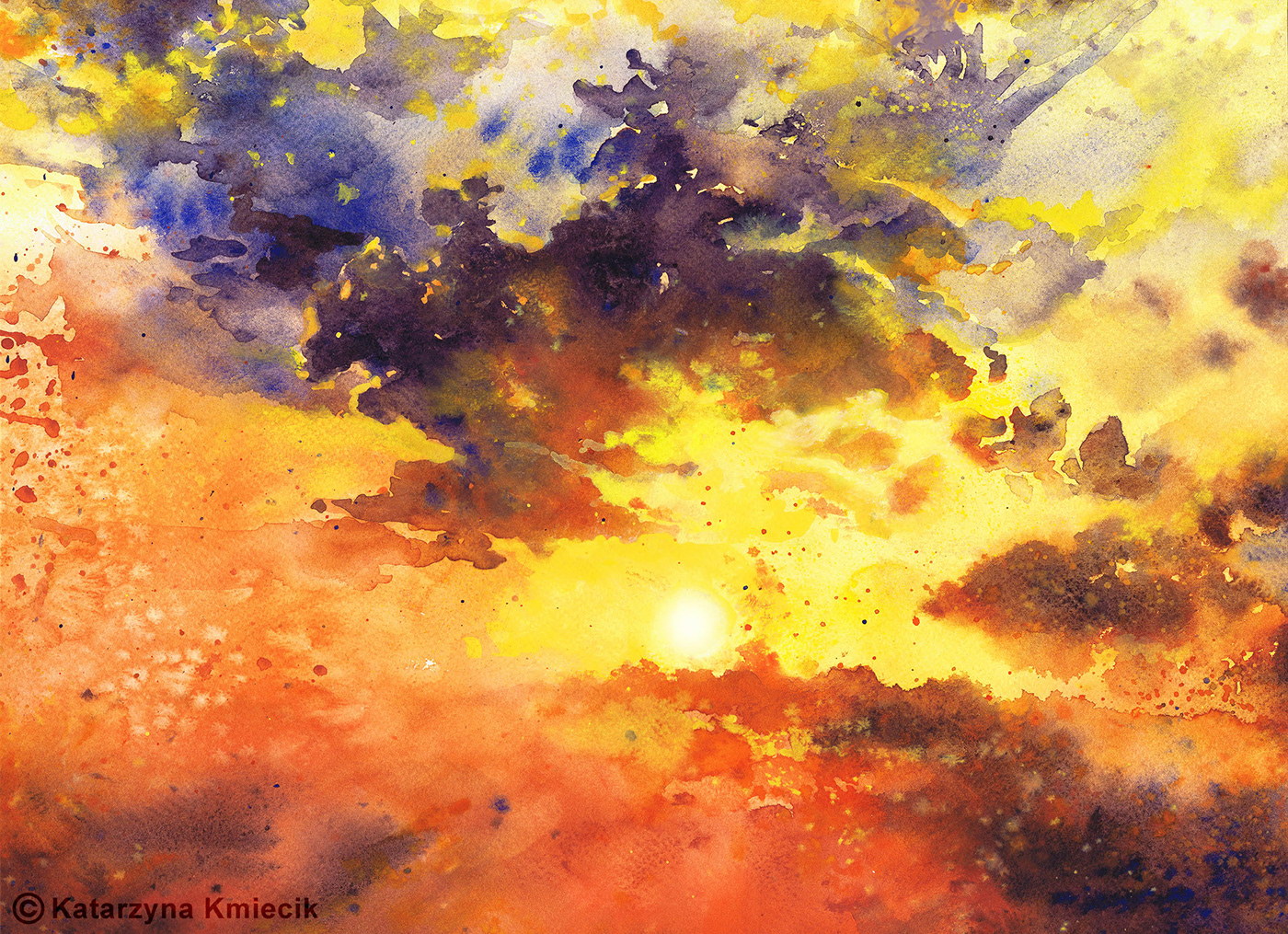
Technique 1: Wet-on-Wet for Dreamy Effects
Creating Soft Edges Wet-on-wet is ideal for painting skies with soft, billowy clouds or gradients. Start by wetting your paper thoroughly with clean water. While the paper is still damp, apply your chosen colors, allowing them to blend naturally. This technique encourages colors to merge seamlessly, creating an ethereal, almost cloud-like effect.
Layering for Depth To add depth, wait for the initial layer to dry slightly before introducing darker shades or additional hues. Gradual layering builds complexity and realism in your sky.
Technique 2: Dry Brush for Textured Clouds
Adding Definition Contrary to wet-on-wet, the dry brush technique involves using a dry brush with minimal paint to create texture. Load your brush lightly with paint, then drag it across the dry paper to depict distinct cloud edges or to suggest the wispy strands of high-altitude clouds. This method is particularly effective for afternoon skies with scattered cumulus formations.
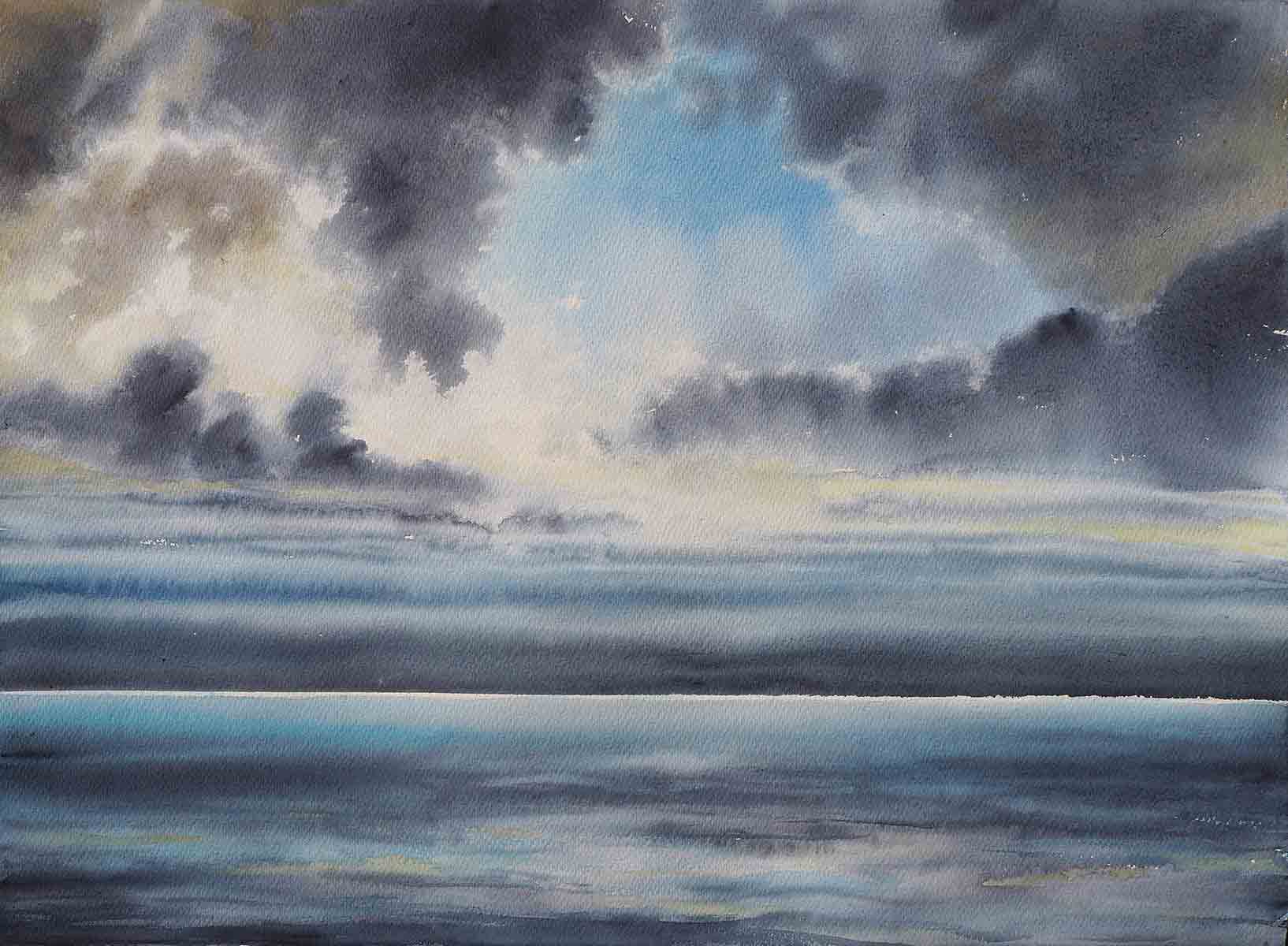
Combining Techniques for Dynamic Skies
Blending Techniques Experiment with combining wet-on-wet and dry brush methods within the same painting. Use wet-on-wet for the base gradient, then introduce dry brush strokes for detailed cloud work. This fusion technique brings both depth and texture to your skies, enhancing their visual appeal.
The Importance of Observation
Nature as Your Muse Regularly observing real-life skies is crucial for capturing their essence. Note how colors change throughout the day, the shapes and positions of clouds, and the mood each sky evokes. Carry a sketchbook to jot down quick sketches or color notes, which will serve as invaluable references for your paintings.
Practicing Patience and Embracing Imperfection
Embrace the Unpredictable Watercolor’s inherent fluidity means that sometimes, unexpected results occur. Instead of frustration, view these as opportunities for creativity. Learn to embrace the happy accidents that give your work character and uniqueness.
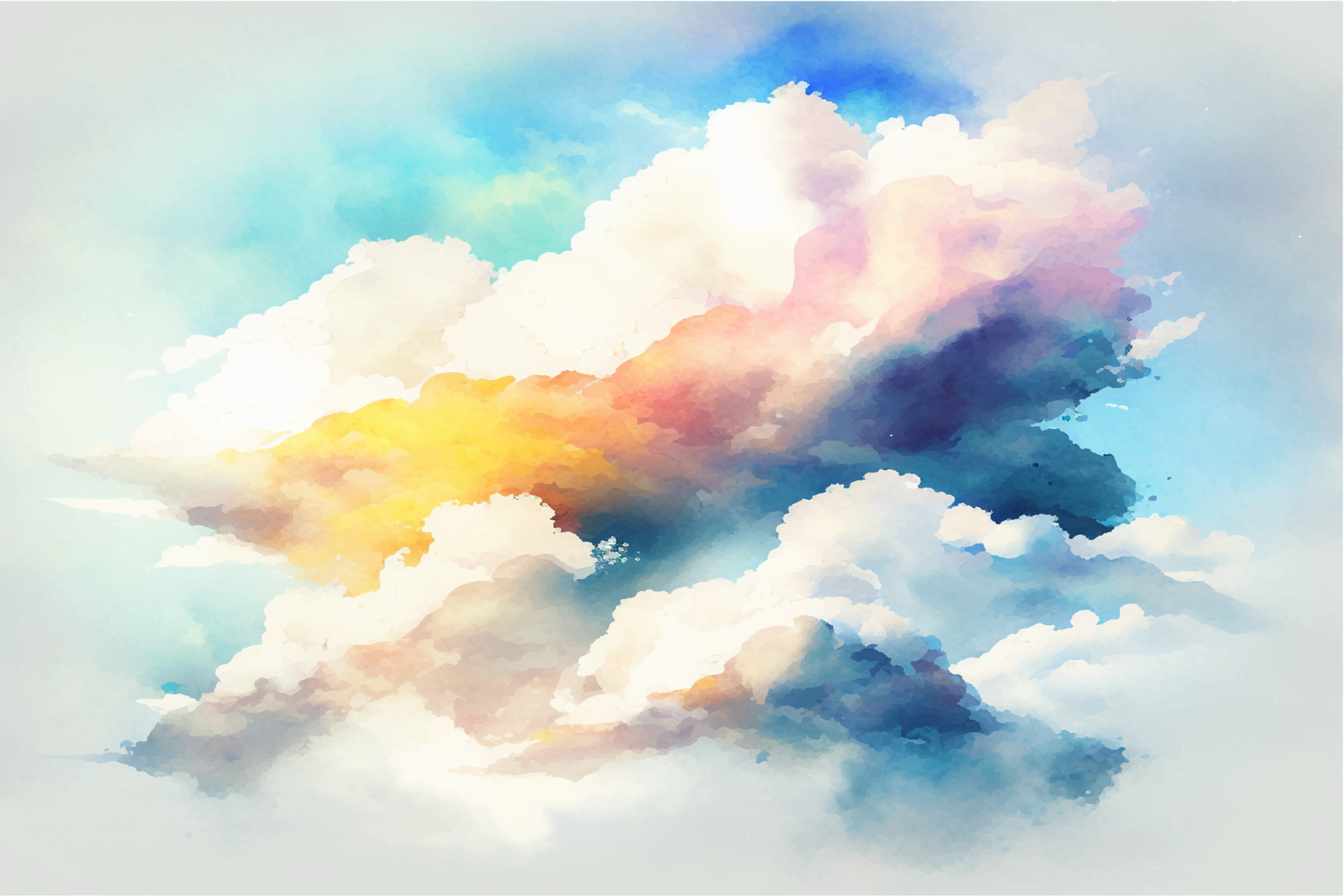
The Art of Layering and Glazing
Building Complexity Layering involves applying multiple thin washes of color, allowing each layer to dry before adding the next. Glazing refers to applying transparent layers to alter or deepen existing colors. These techniques are powerful for achieving luminosity and depth in your skies, especially when rendering the subtle variations in light at different times of day.
Article Continuation: Capturing Mood and Atmosphere in Watercolor Skies
Beyond Techniques: Telling Stories with Color and Light
Having laid the groundwork with essential techniques and color theory, the next step in mastering watercolor skyscapes is learning to convey mood and atmosphere. The sky, with its infinite permutations of light and hue, can evoke a myriad of emotions—serenity, awe, melancholy, or joy. Here, we delve into strategies for harnessing the power of watercolors to tell compelling visual stories.
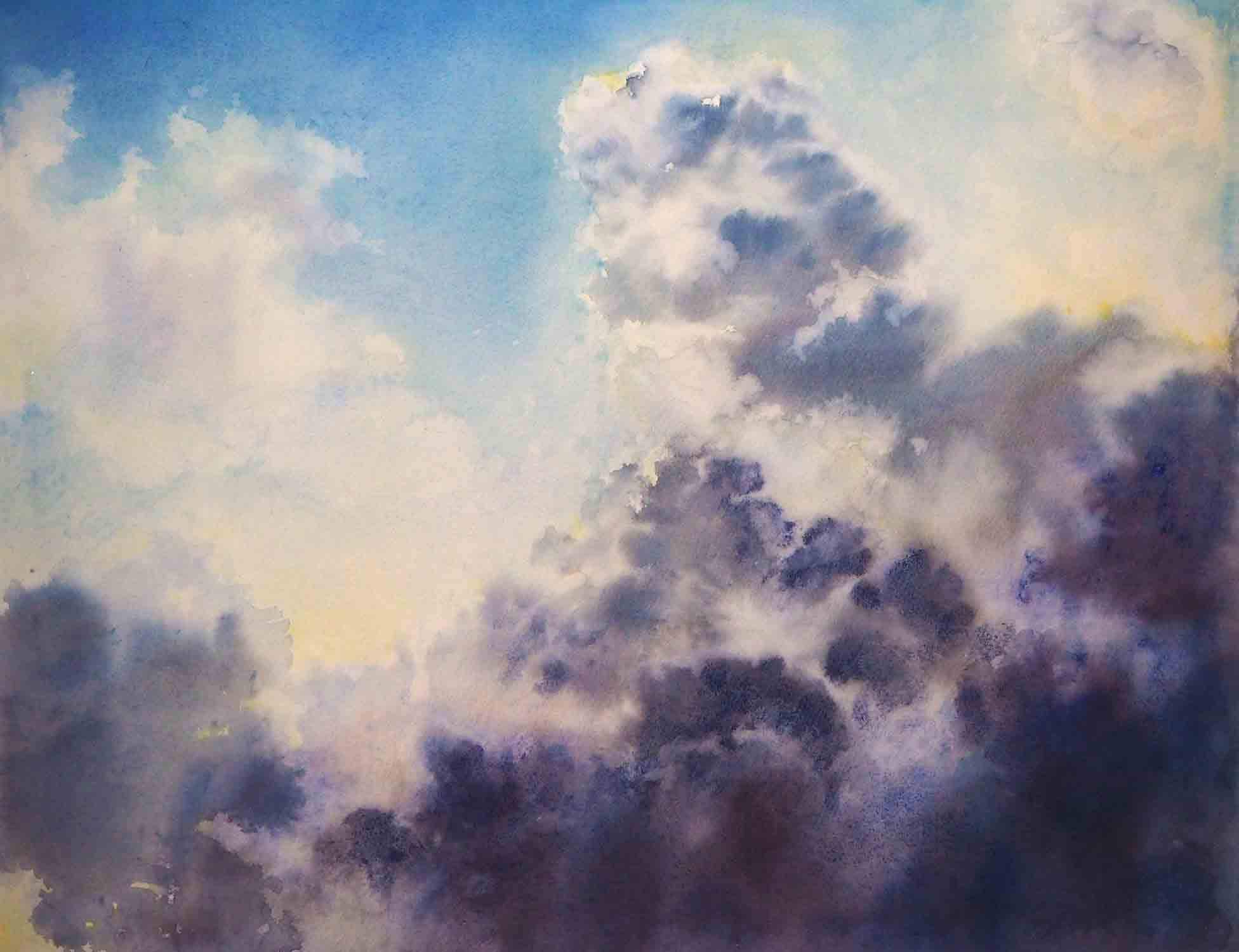
The Emotional Palette: Color Psychology in Skies
Each color carries emotional weight. Warm hues like fiery oranges and golden yellows can ignite feelings of warmth, energy, and optimism, perfect for depicting a radiant sunrise that signals the start of a new day. Conversely, cooler tones such as deep blues and soft violets evoke calmness, introspection, and even a touch of melancholy, making them ideal for painting tranquil evenings or moody stormy skies.
To enhance the mood, consider the intensity and saturation of your colors. High saturation suggests vibrancy and excitement, while desaturated or muted tones convey a sense of stillness or nostalgia.
Light and Shadow Play: Creating Drama
Light is the quintessential element in defining the atmosphere of a painting. Observe how natural light interacts with the sky, casting shadows and highlighting areas to create a sense of depth and movement. In watercolors, you can achieve this by strategically placing darker and lighter washes.
For instance, during a sunset, focus on the contrast between the glowing horizon and the darkening upper sky, using warmer tones for the former and cooler, deeper hues for the latter. This contrast not only captures the physical attributes of the scene but also imparts a sense of fleeting beauty and the passage of time.
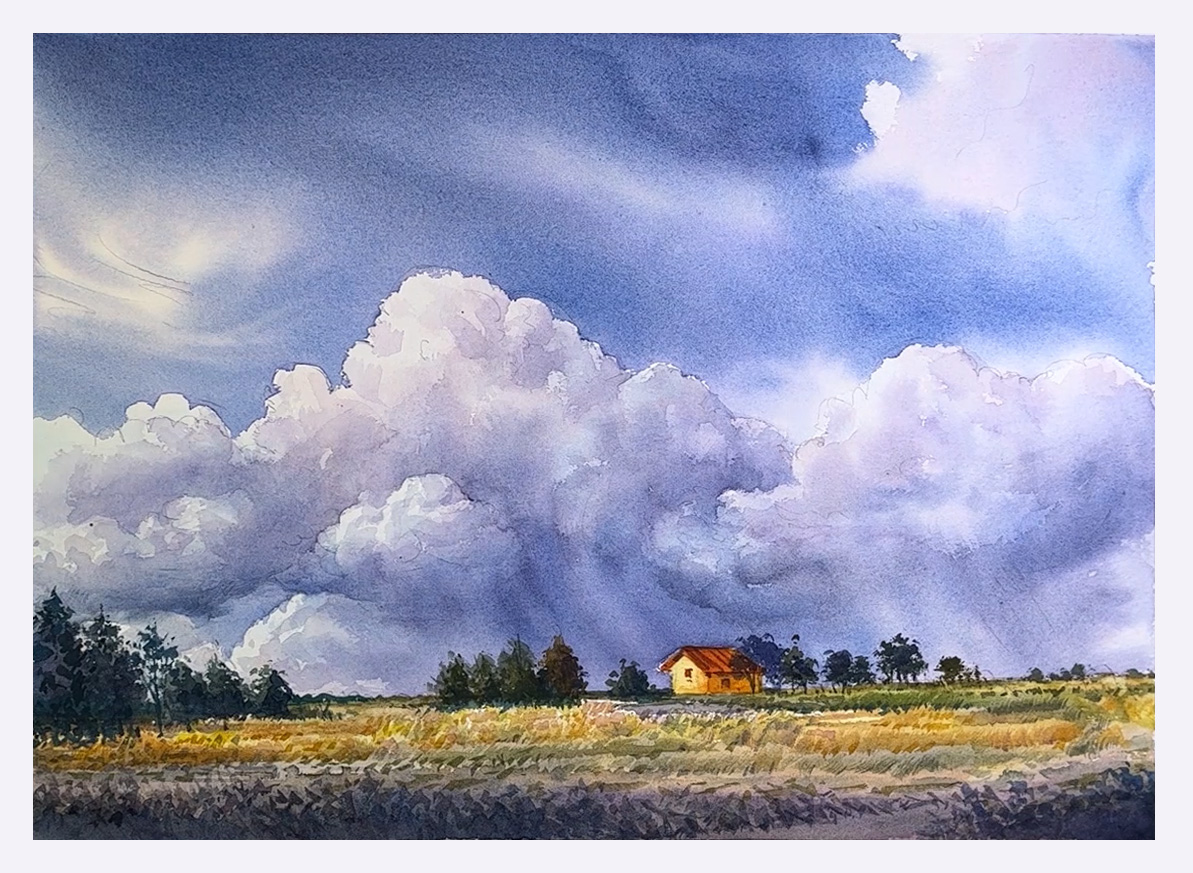
Weather Conditions: Expressing Nature’s Moods
Weather plays a pivotal role in shaping the mood of your painting. A clear blue sky speaks of calm and serenity, while stormy grays and turbulent blues indicate drama and tension. To capture these effects, pay attention to specific weather phenomena:
- Rainy Skies: Use a wet-on-wet technique with blues and grays, allowing the colors to bleed and mix organically, mimicking raindrops and overcast conditions.
- Sunbeams: For rays piercing through clouds, use a dry brush technique to create lines of light, enhanced with touches of warm colors around the beams.
- Foggy Mornings: Employ a glazing technique with pale blues and grays, gradually building up layers to create a sense of mist and mystery.
Conclusion: Painting the Skies, One Stroke at a Time
Watercolor sky painting is a journey of discovery, where every stroke is a lesson in patience, observation, and creative expression. With practice, the techniques outlined here will become intuitive, enabling you to paint skies that stir emotions and capture moments in time. Remember, art is as much about the process as the final product; enjoy the journey, and let your skies reflect the beauty you see in the world around you.





